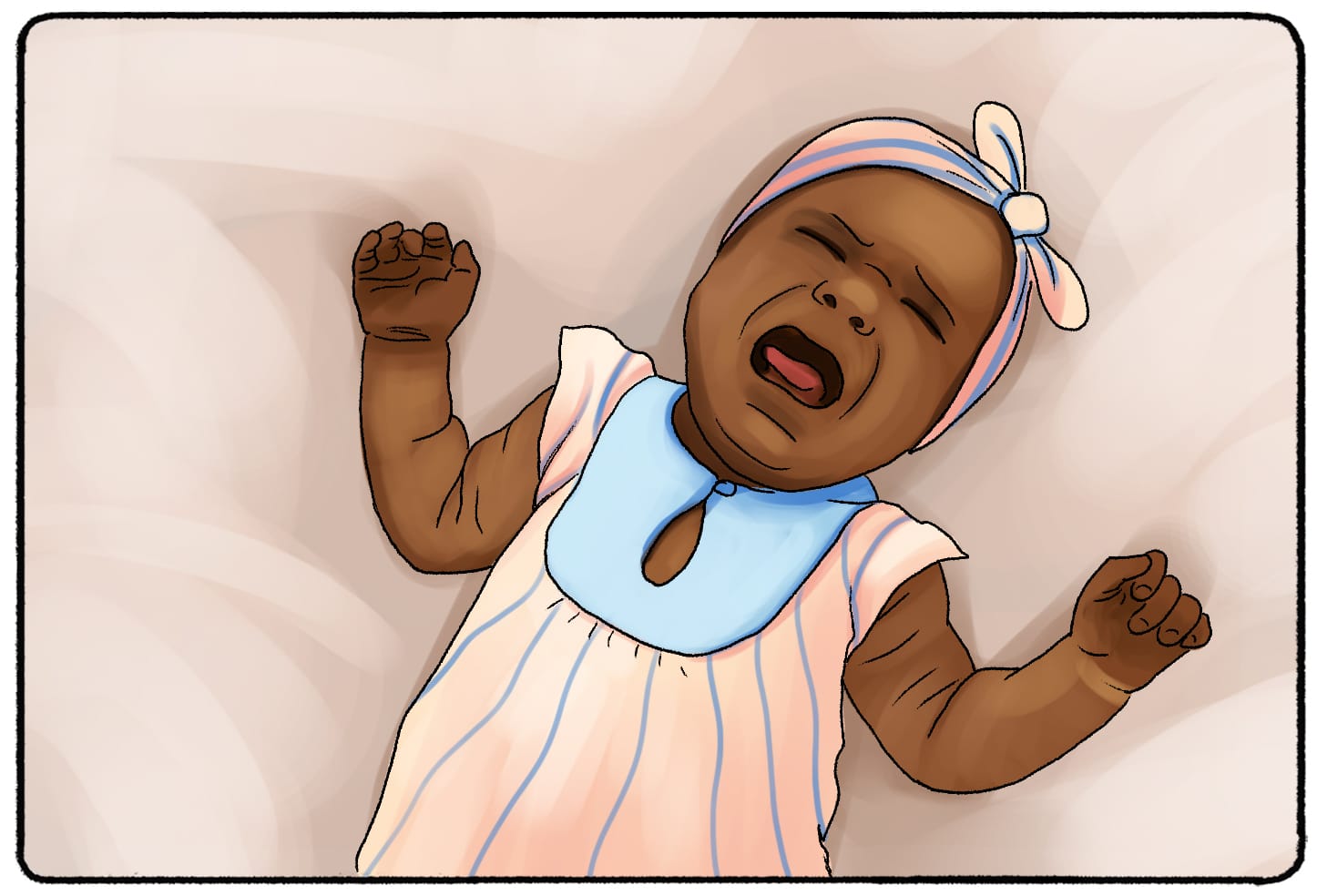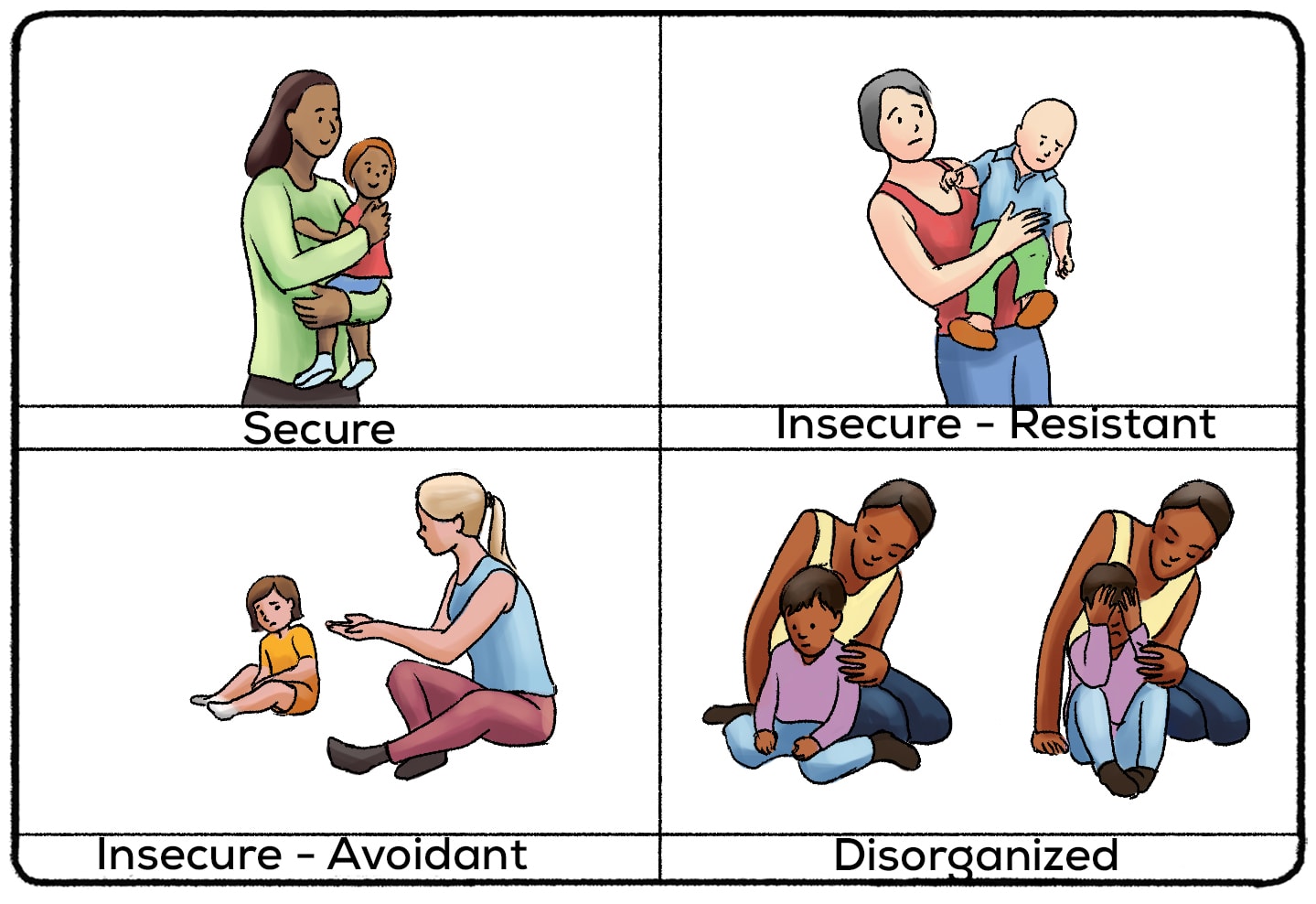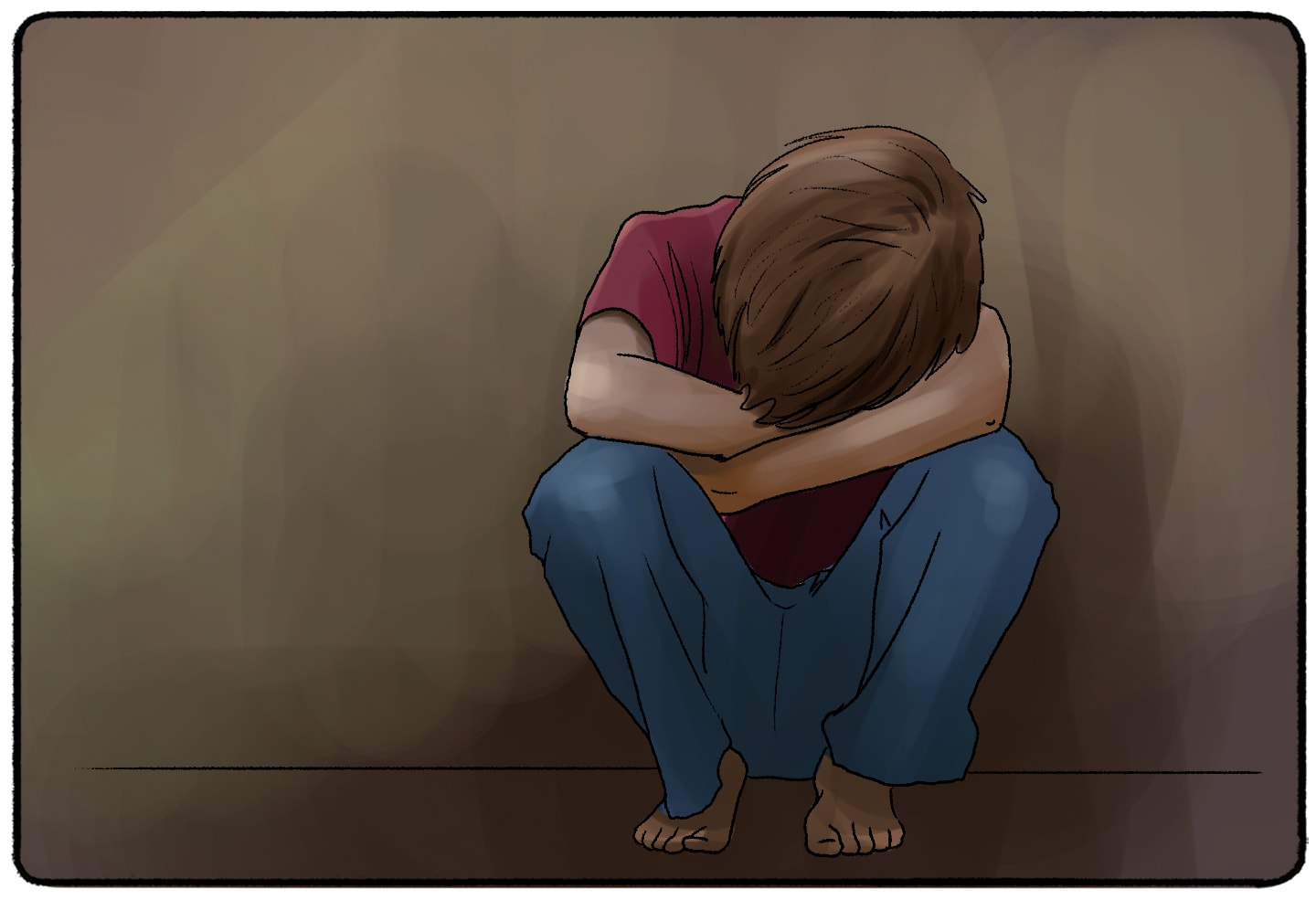Example Of Trust Vs Mistrust
Erik Erikson'south piece of work with psychosocial development has broken down the different stages of social interaction and how they touch a child'southward personality, outlook, and virtues. That crucial kickoff phase of psychosocial development tin affect your life manner by infancy or even adolescence.
What Is Trust Vs. Mistrust?
The first stage of Erik Erikson's Stages of Psychosocial Development is Phase 1, under which the child goes through a psychological crisis of "trust vs. mistrust". They must rely on the mother for their needs; the response of the female parent determines whether the child develops trust or mistrust.
This care and attentiveness must be consistent in gild to build trust. If an infant is getting some care from its mother, but cannot rely on consistent care, mistrust and anxiety volition still grade. With consistent intendance, the child will also develop hope.
Trust vs. Mistrust Age
This stage starts as soon as a child is born and lasts until the child is 18 months sometime.
Basic Example of Trust vs. Mistrust
Allow's say a mother feeds her babe in the morning. The next time the kid is hungry, they volition cry in the hopes that the mother volition hear the cry and feed the child again. If the mother succeeds in fulfilling the kid'south needs, trust will grow stronger. If the mother fails to feed the child, their hopes will exist dashed and mistrust may start to grade. When we cannot concord onto hope, we can quickly feel lost or helpless.

This hope and trust get a foundation for the developing child. In the second and tertiary stages of psychosocial development, the child has more opportunities to branch out and take control of their decisions and actions. Without a trusting parent or guardian, information technology tin can exist harder for the kid to make these decisions and co-operative out further.
Are Trust Problems Normal?
It'southward non aberrant for a kid to go through the trust vs. mistrust stage without fully establishing trust with their parents. Nigh of the time, information technology'southward not the child'south "error" anyhow! A kid cries and tries to communicate its needs with the limited abilities that it has. If the parent cannot fulfill those needs, the child may, unfortunately, develop trust problems.
Trust issues tin easily deport on until adulthood, and may also exist influenced by other factors. A person who experiences infidelity may accept a difficult time trusting future partners. Someone who was fired from a job suddenly may not feel comfy as they seek out some other job. Bad things happen to all of us, and reacting to those situations by trying to preclude them in the future is normal. The thoughts nosotros feel when nosotros have trust problems may be a defense force mechanism. It is normal to desire to protect yourself, and then it is normal to experience trust bug when that protection is threatened.
Trust issues go beyond romantic relationships. A person who has non established trust with their parents or whose trust has been broken may not trust anyone. Educators, scientists, fellow citizens, etc. In recent surveys , a majority of Americans say they can trust…that trust for others has worsened and is causing a lot of interpersonal conflicts within the country!
Trust vs. Mistrust in Adulthood
Although Erikson outlined the psychosocial stages of development into neat and clean stages, they can take an upshot on each other. A child does not merely forget their trust bug when they plow 18 months quondam – their interests merely begin to shift every bit they explore the conflict of autonomy vs. shame and dubiousness.
Erikson went and then far equally to propose that if a child does not learn to trust in the first 18 months of their life, all areas of their life will be impacted. Call back about it. Our relationships, and the trust we put in them, impacts many of our decisions. Would you travel the earth if you didn't trust the people who lived in information technology? Could you network effectively if you lot didn't trust people to help you in the ways that you lot could help them? Adults can discover ways to re-institute trust that they might not have learned in their infancy, but it is entirely possible that they will have to take those steps.
If you have e'er been in a human relationship afterward being cheated on, you know the affect that mistrust can take.
Lasting Impacts of Lack of Trust
Psychologists who have studied trust vs. mistrust suggest that not only is this stage of import, simply it as well has lasting implications. Inquiry assembly a lack of trust with:
- Criminal and delinquent behaviors
- Social disengagement
- Irresponsibility
- Loneliness
- Peer rejection
- Low
- Lower self-perceived social acceptance
- Lower peer-rated social preference
That'due south a lot of problems that tin exist solved by more than attentiveness in infancy!
Similarly, psychologists like Mary Ainsworth pointed to the relationships and trust established in infancy when discussing developed relationships. Yeah, the trust issues you lot have with your partner may be traced back to your needs not being met as a child. At to the lowest degree, that's what attachment theory suggests.
Attachment Styles and Trust
The impacts of mistrust in this first stage can last a lifetime and accept a serious impact on the way nosotros interact with others.
Erik Erikson was non the only psychologist who was inspired past the works of Freud. John Bowlby and Mary Ainsworth likewise considered Freud's work in their enquiry on development. Bowlby and Ainsworth are all-time known for their theories on attachment styles.
The psychologists named iv different attachment styles that develop as a kid and carry over into adulthood. If, for instance, a child develops a secure attachment manner, they are more probable to accept healthy relationships and boundaries as an developed. These relationships include romantic relationships, friendly relationships, or even just the relationships you have with people that y'all have but met.

These four styles either autumn under the category of "secure" or "insecure."
Secure Attachment Style
Someone with a secure attachment manner is more likely to have healthy relationships. They are more probable to trust their parents, strangers, and authorisation figures. In the eyes of Erik Erikson, children with a secure attachment manner are better suited to motion onto the next phase with a salubrious social life and personality.
Insecure Attachment Fashion
People with insecure attachment styles may have developed some blazon of mistrust equally a child. Possibly a parent was absent or their level of intendance was desultory. There are three types of zipper styles that fall under the "insecure" category, and they manifest in different means.
Reddit user mahanahan shared their essay on how Barney from How I Met Your Mother may accept developed mistrust and an insecure attachment style as a young child. Clearly, this affected his ability to form relationships in adulthood. This stage of psychosocial evolution is more crucial than we might initially recall!
More Examples of Trust vs. Mistrust
In some cases, mistrust is developed when a parent fails to meet their child'south needs despite their best intentions. Maybe the parent is stressed out from caring for multiple children, away from dwelling house due to a hectic chore schedule, or does non feel confident in their child-rearing abilities. This is completely normal, equally parents often live demanding lives! (Non every country or job supports paid maternity or paternity get out!)
But there are besides examples of trust vs. mistrust that are downright cruel. Neglecting or abusing a child tin certainly pb to a life of not but mistrust only likewise underdevelopment.
Feral Children
In the 1940s, 2 different feral children were discovered by psychologists. They were built-in one calendar month apart and establish inside 9 months of each other. Their stories fascinated psychologists and the world.
Both children had been isolated and neglected throughout their infancy up until they were discovered. Anna, from Pennsylvania, was kept strapped downwards to the cranium of her family's home. Isabelle, of Ohio, was kept in a night room with simply a deafened-mute mother as a contact.
Discovered at the age of vi, both girls experienced severe developmental disabilities. Their lack of socialization from an early age resulted in linguistic difficulties, astringent mistrust, and a myriad of wellness bug.
Anna died at the age of 10 from jaundice. Psychologists worked closely with the child to improve her abilities and speed upwards her evolution, but to no avail. Anna had the linguistic and social skills of a two-year-sometime when she passed away.
These cases accept contributed to the study of socialization from an early age. Without proper interaction with family, a child may non be able to develop fully. In less extreme cases than Anna and Isabelle, a lack of interaction with family may cause a child to develop anxiety, shame, mistrust, or a lack of promise.

Tin Trust vs. Mistrust Be Resolved?
We know that Anna'due south story is tragic. Fortunately, while Isabelle struggled to catch upward, she did manage to catch up with her peers within three years. If a kid goes through this first stage and develops mistrust, there is still hope for them to have a thriving social life and healthy relationships. Certain, in that location will be a delay, merely with proper therapy, education, and relationships moving forrard, information technology's possible to "catch upwards" and enter into later stages in Erik Erikson's Stages of Psychosocial Evolution with hope and trust.
How to Resolve Trust Issues Equally an Adult
Mistrust developed equally an infant can touch a person for the rest of their lives, only it does non accept to. Reading and understanding the theories behind trust issues and insecure attachment tin can be a great start stride to resolving these feelings. You lot may have to put your trust in someone to resolve these bug, just that is all part of the procedure!
Practice mindfulness.
Before having conversations with your partner or taking risks, sit with yourself and be mindful. What thoughts are causing you to feel broken-hearted or nervous? How does this lack of trust feel in your body? Every bit yous start to get more aware of how yous talk to yourself, you may find that y'all can change the conversation and reassure yourself to a place of deeper trust.
Communicate with your partner and friends.
With the knowledge of your trust issues at hand, talk to friends, family unit, and your partner nearly how these trust bug make you experience. This is a risk in itself, merely it'south ane that will pay off. Open and honest communication will help put everyone on the same page. Yous may notice that your friends, family, or partner were not aware of these trust problems. They tin can use this information to adapt how they communicate or behave with you in order to build trust more effectively.
Reach out to a mental health professional person.
You do not have to go through this process lonely. A certified mental health professional tin walk y'all through the beliefs and experiences that environs your trust problems. Many therapists utilize an approach based on the ideas of Erikson, Ainsworth, and other psychologists who studied zipper theory and trust issues. Consider asking possible therapists for a 15-minute consultation in which you can establish trust and decide if this is the correct professional person for y'all.
Example Of Trust Vs Mistrust,
Source: https://practicalpie.com/trust-vs-mistrust/
Posted by: davidsonnoby1984.blogspot.com


0 Response to "Example Of Trust Vs Mistrust"
Post a Comment